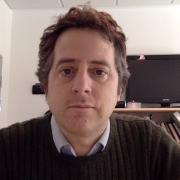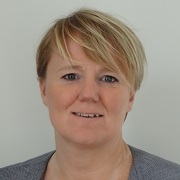- Level Foundation
- Duration 27 hours
- Course by Technical University of Denmark (DTU)
-
Offered by

About
Far too often, researchers are misinformed about the role and the possibilities arising around patents and Intellectual Property Rights (IPR). In this course we will teach you what IPR are - with a special focus on patents. Also this course will look at the importance of patents in the world of biotechnology - and what you actually can patent. Should your research be protected? Can your research even be protected? There are a lot of misunderstandings about patents, so first step is to know what patents really are and how they work. Then we will introduce how and when to apply for them. Also how to find existing patents is a crucial and necessary element to being able to assess whether your research should be protected or not. The course will be divided in 7 sessions, and at the end of the course, you should be able to: - describe the different types of IPR - explain the conditions of patentability for an invention - describe the various stages involved in a patent application - search and retrieve patent information from databases - read and understand a patent - write claims related to biotechnology - understand and explain the concept of Freedom To Operate Course Materials: You will need the following book as a reading material for the course: “Patenting in Biotechnology, a laboratory manual” by Peter Ulvskov, which will be available from http://polyteknisk.dk/home/Detaljer/9788750211068 Also, you will need to get access from your home institution to these databases: - Derwent Innovation Index (via Web of Science) - SciFinder NB: This course is related to a 5 ECTS point course that is a mandatory requirement for access to the BioBusiness and Innovation Platform (BBIP) program at the Copenhagen Business School. NOTE: this Coursera course will NOT be sufficient for attending the BBIP program but successful completion of this course (with a Course Certificate) will be a plus for applying to the BBIP. To obtain the 5 ECTS points, you will have to enrol as a DTU Student, participate on a hands-on workshop on patent databases and pass an exam in presence of an external Censor. For more information, please email me at: fdemasi@cbs.dtu.dk Link for BBIP: (http://www.cbs.dk/viden-samfundet/strategiske-indsatsomrader/biobusiness-and-innovation-platform-bbip)Modules
Meet the course teachers, get a brief overview, and learn about the BBIP program. ( http://www.cbs.dk/viden-samfundet/strategiske-indsatsomrader/biobusiness-and-innovation-platform-bbip)
2
Videos
- About This Course (5:27)
- The book and the databases
Introduction to Intellectual Property Rights
1
Assignment
- Basic IP Quiz
1
Peer Review
- Assessing Novelty
3
Videos
- What is Intellectual Property (IP)? (13:27)
- What Are Patents? (13:41)
- What Is Novelty? (11:33)
1
Readings
- Suggested reading from the book
Document Types
2
Assignment
- Using The Databases + Reading a Patent
- Patent trees and families
1
Peer Review
- Your Own Patent Timeline
2
Videos
- Document Types I - Making Patent Timelines (US) (23:20)
- Document Types II - Making Patent Timelines (PCT) (22:10)
2
Readings
- Suggested reading from the book
- Patenting in Biotechnology
Document Types
3
Assignment
- Understanding the World of Patents
- The filing process
- Document Types
1
Peer Review
- Analyse a Patent
2
Videos
- Document Types II - All Documents I (24:05)
- Document Types II - All Documents II (14:10)
2
Readings
- Suggested reading from the book
- Patenting in Biotechnology
Patent Searching in Databases
4
Assignment
- Derwent User Interface
- Derwent Boolean Algebra, Wildcards and Operator Precedence
- Hierarchical Search Profiles in Derwent
- Field Tags and Operators in USPTO and Patentscope
1
Peer Review
- Hierarchical Search
3
Videos
- Part I (Database: Derwent) (15:52)
- Part II (Database: Patentscope) (14:30)
- Part III (Database: USPTO and NCBI) (Genetic Sequences) (21:46)
1
Readings
- Suggested reading from the book
Different Types of Biotechnology Inventions
1
Assignment
- Biotechnology Inventions
1
Peer Review
- Patentability of Your Own Biotech Invention
1
Videos
- Sequences, Peptides, Enzymes, Antibodies, and Microorganisms (28:32)
2
Readings
- Suggested reading from the book
- Patenting in Biotechnology
Freedom To Operate (FTO) and License Deals
1
Assignment
- Freedom To Operate
1
Peer Review
- Investigation of FTO for Your Own Biotech Invention
1
Videos
- Freedom to Operate and Licensing Deals (21:42)
Patenting Small Chemicals and Compounds
1
Assignment
- Patenting Small Compounds
2
Videos
- Novelty for Small Molecules (15:22)
- Natural Products (20:25)
1
Readings
- Suggested reading from the book
Chemical Patent Database: Scifinder
1
Peer Review
- Scifinder Search
1
Videos
- Scifinder: Searches for Small Molecules (22:27)
Why / Why Not Patent?
1
Assignment
- Patenting Strategy
2
Videos
- Why / Why Not Patent? (14:02)
- Conclusions (4:08)
Extra Material
1
Videos
- Closing Remarks
1
Readings
- Extra reading from the book
Auto Summary
Embark on a comprehensive journey into the realm of patents and Intellectual Property Rights (IPR) with our specialized course, "Patenting in Biotechnology." Designed for those in the Science & Engineering fields, this course aims to demystify the complex world of patents, particularly within the biotechnology sector. Guided by experienced instructor Peter Ulvskov, participants will delve into the nuances of IPR, focusing on understanding, applying for, and leveraging patents to protect research. The course addresses common misconceptions and equips learners with the knowledge to determine the patentability of their inventions. Over the span of seven sessions, learners will: - Gain a solid understanding of different types of IPR. - Learn the conditions necessary for an invention to be patentable. - Navigate the various stages of the patent application process. - Develop skills to search and retrieve patent information from key databases. - Interpret and comprehend patent documents. - Craft patent claims specific to biotechnology. - Grasp the concept of Freedom To Operate. Participants will need the course textbook, “Patenting in Biotechnology, a laboratory manual” by Peter Ulvskov, and access to databases like the Derwent Innovation Index and SciFinder through their home institutions. While this course is informative on its own, it also acts as a supplementary asset for those aspiring to join the BioBusiness and Innovation Platform (BBIP) program at the Copenhagen Business School. Note that a Course Certificate from Coursera will enhance your BBIP application but does not replace the mandatory 5 ECTS point course, which requires enrolment as a DTU Student and completion of additional requirements. The course is available through Coursera with a Starter subscription and is suitable for beginners in the field, offering foundational knowledge essential for anyone interested in the intersection of biotechnology and intellectual property. Join us to unlock the potential of your research and safeguard your innovations in the dynamic world of biotechnology.

Federico De Masi

Peter Ulvskov

Karin Beukel

Claus Bøttcher Jørgensen

Finn Valentin


